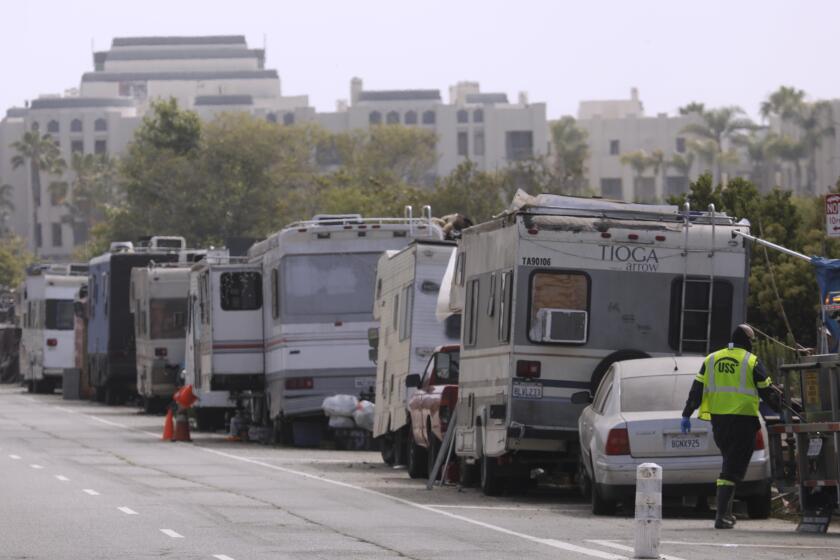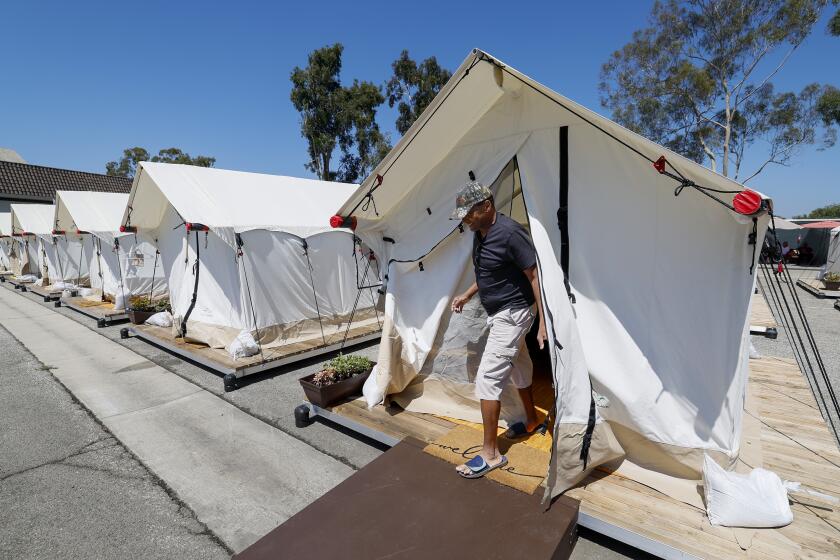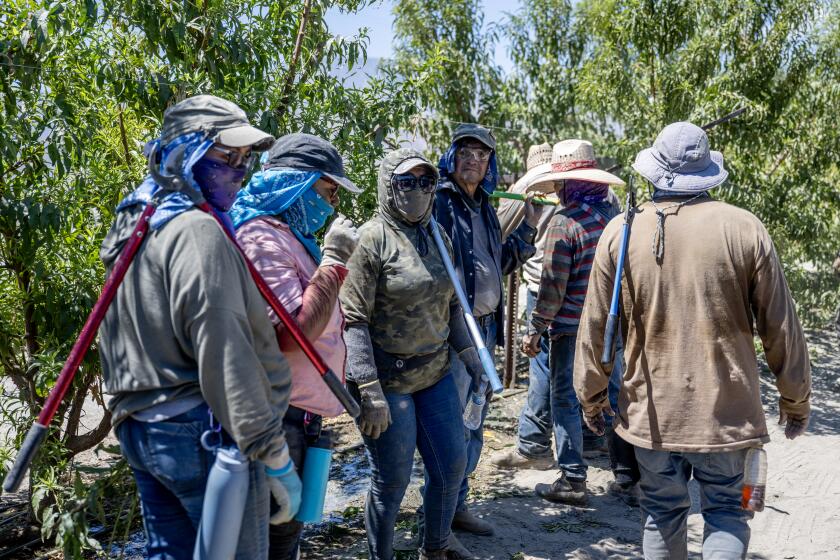
- Share via
At first, when she became homeless at 59 last year, Laura Garciaros felt lucky to have her motor home, a 1989 Mallard Sprinter she bought with the help of friends.
It ran and the A/C worked. She found a spot that felt somewhat safe, just off a street lined with RVs near Hollywood Burbank Airport and parked next to a shady tree near a business where the owners let her fill her water jugs from a spout and plug her coffee maker into an outdoor outlet.
But it wasn’t long before she was anxious to leave. After a series of relentless summer heat waves, her A/C sputtered out and she felt at times as though she was suffocating inside the vehicle, soaked in sweat. She grew increasingly fearful when several nearby RVs went up in flames. The rumor in the camp was the fires were acts of arson.
She didn’t feel comfortable venturing into the neighborhood. Just to use the bathroom, she had to walk to a grocery store nearly half a mile away. And when she walked down the street, men harassed and followed her.
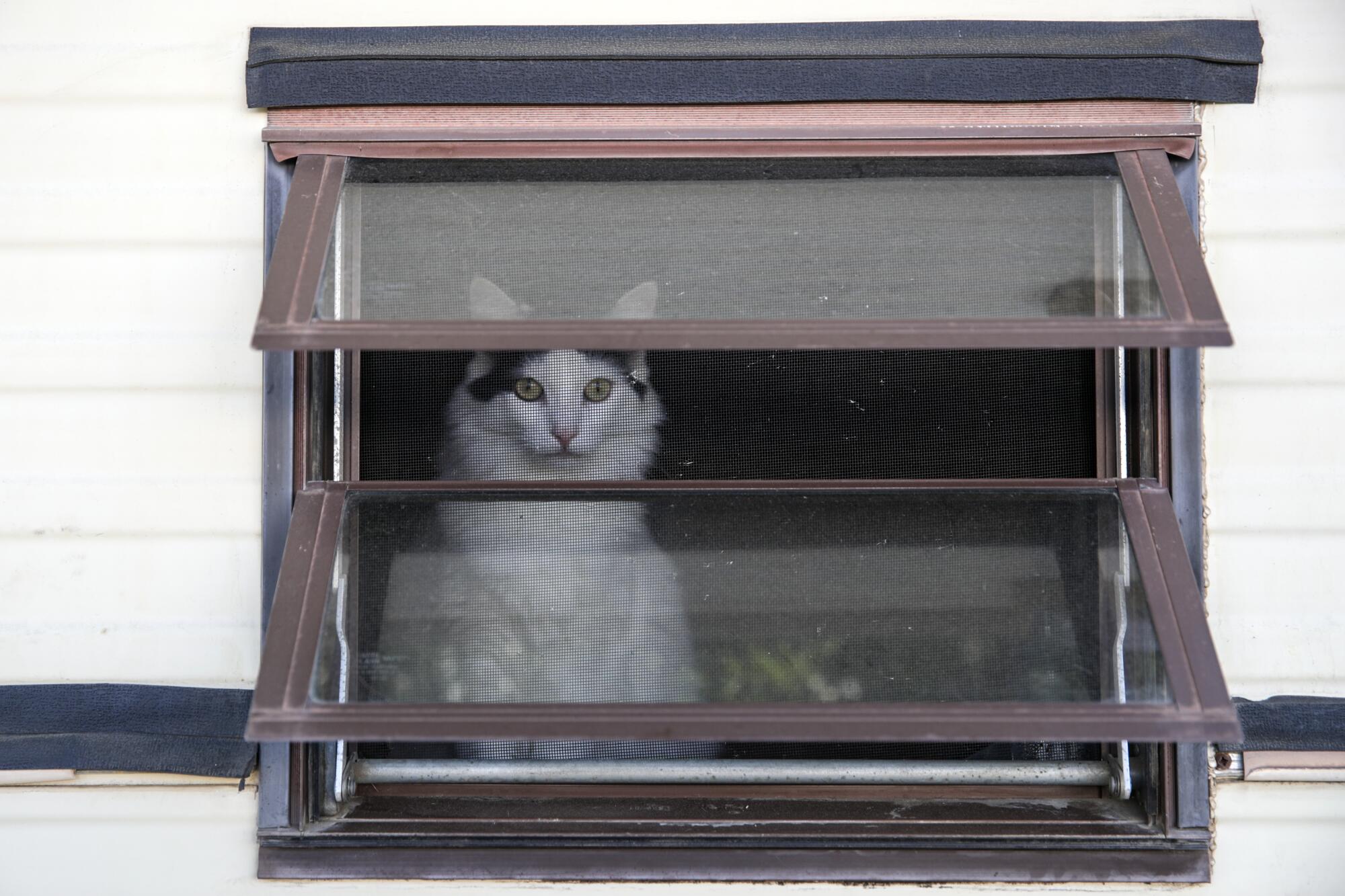
“I became homeless three months ago and am desperately trying to find housing of any kind,” she wrote in a plea for help on Facebook.
Across the region, officials and a growing number of residents are pushing to get rid of the RV encampments that have proliferated on the streets since the COVID-19 pandemic. The Los Angeles City Council backed an effort to crack down on the renting of RVs to homeless people and is considering a motion to create a program that would restrict RV parking around schools and homes.
What has been unfolding at the Ballona Wetlands represents a new model to fix a complicated homelessness problem that’s mostly of L.A.’s own making.
For Garciaros, the motor home was better than the alternative — staking a tent on the sidewalk or sleeping on a cot in a shelter — though it was far from the life the former homeowner and makeup artist had imagined for herself.
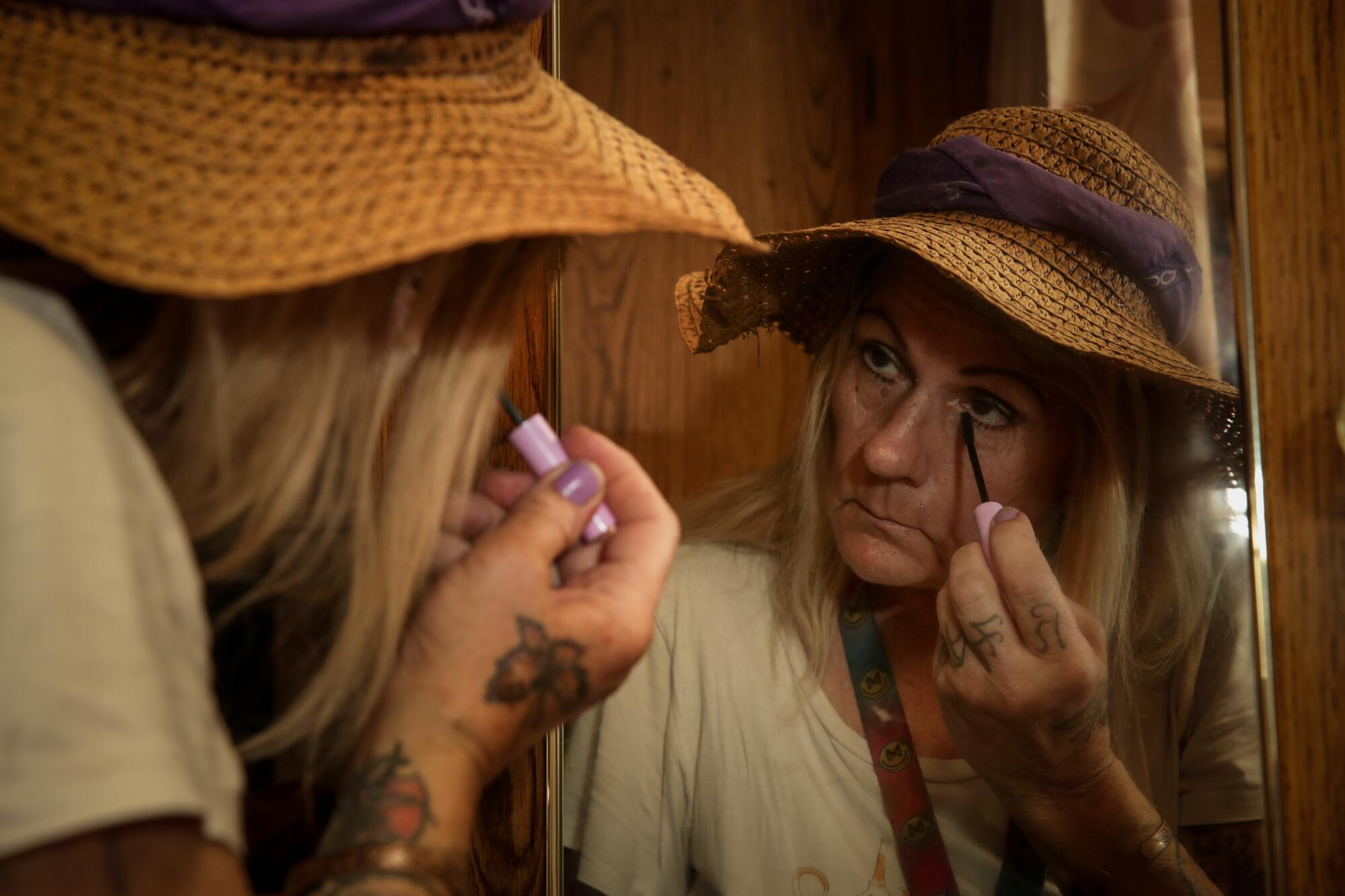
She wanted a home, one with an address, where she could have running water and cook a meal. But like thousands of other homeless residents across the city, to get there she would face a labyrinth of obstacles, big and small, systemic and by happenstance, that made climbing out of the hole near impossible. Even a minor miracle in her favor — securing a Section 8 voucher for housing — was no promise of getting off the streets.
At her age, Garciaros reflects many of California’s unhoused men and women. Nearly half of all single adults living on the streets are older than 50. Many of them became homeless after an event that kicked a fragile financial situation off kilter.
Garciaros grew up middle class in Hacienda Heights, in a home that was “idyllic from the outside,” and for most of her adulthood maintained the trappings of that life.
In her teens and early 20s, she had been part of L.A.’s rock music scene, one of a “bunch of girls” who spent their nights hanging out at clubs like the Troubadour and their days working jobs to support themselves, the musicians and other artists, she says. She was so enmeshed in that scene that there’s even a thank-you to her on Guns N’ Roses’ debut album, “Appetite for Destruction,” one of the bestselling records of all time.
In her mid-20s, she left that drug- and booze-fueled world, went to rehab and met the man who would become her husband. They had two children and bought a house in a neighborhood of big trees and two-car garages in Sherman Oaks. When they separated and sold the house a few years later, she moved into an apartment and struggled to make ends meet as a single mother.
Then, when she was in her late 40s, she suffered a violent attack that left her cycling between psychiatric hospitals and living with family, she says. Post-traumatic stress made it difficult to keep a job, and for a time she rented rooms in homes across the San Fernando Valley, paying about $1,000 a month. But the rooms never worked out long term, and eventually she ran out of money to secure another apartment. She stayed with friends for a few years, and when they left the state in the summer of 2022, she became homeless.
It was like walking off a plank, as the world of the housed and employed sailed on. She was in shock, with little idea of what to do next.
Taking people off the street and into tents is a new twist on homeless shelter being explored by the San Francisco-based Urban Alchemy in two tent villages operating in Los Angeles and Culver City.
She drove her RV to an industrial stretch of the Valley that she knew well, not far from the apartment where, years earlier, she had lived with her two sons, and a few miles from the home she had once owned with her husband.
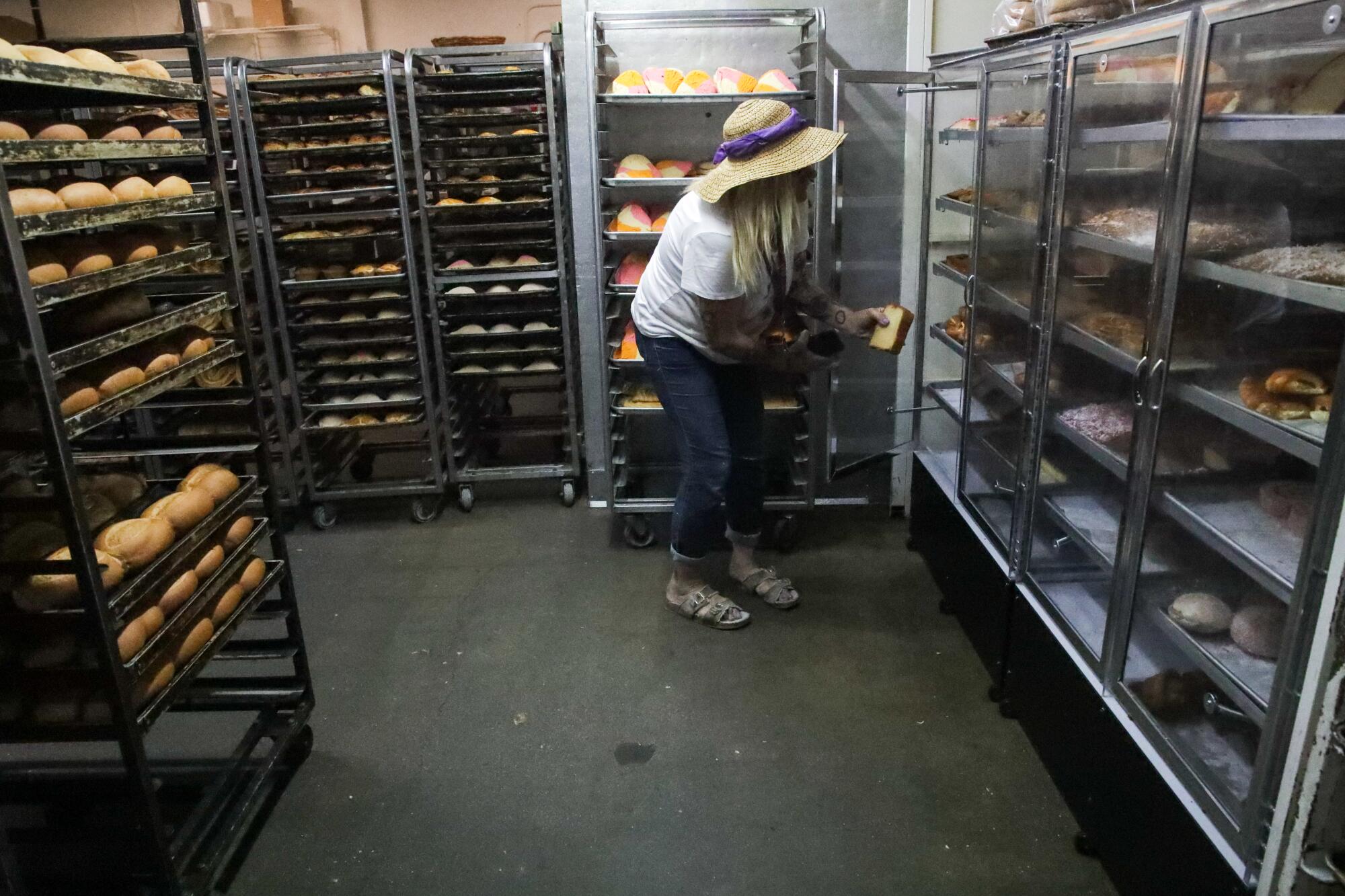
She took comfort in the familiar surroundings. There was the small colony of cats she fed and a family-run bakery up the street that extended her credit when she didn’t have money for a pastry.
“It’s the safest place I could be under the circumstances,” she said. “I know that if I needed to I could stand out right in the middle of the street and somebody would hear me.”
She quickly learned that it was best to try to make herself as invisible as possible to avoid the men who would harass her from their cars, on the bus and as she walked down the street.
“I put myself on mute,” she said. “That’s what I call it. I just muted myself.”
The RV was a way to hold on to something resembling a home. It kept her safe at night and allowed her to keep her cats and her storage boxes filled with photos and keepsakes. The place she chose is lined with RVs, whose dwellers tend to police themselves, said LAPD Senior Lead Officer Gabriel Ahedo, who is responsible for the area.
“You have a lot of good people in the RVs,” he said. The biggest challenge many of them face is the long wait for housing, he added.
Early on, Garciaros’ son Jonathan and his girlfriend thought they could help her find a space in an RV park. But they discovered that most don’t accept older vehicles, and that even if they do, a spot is expensive.

They created a Google spreadsheet with a list of housing and mental health agencies and nonprofit groups that might help her secure an apartment, and spent hours calling, sharing her story, getting transferred, sharing again and growing increasingly frustrated at the lack of a clear pathway.
Eventually, someone gave them the name of someone at the Los Angeles County Department of Mental Health who helped Garciaros pursue what she thought was her best chance at getting out: a federal Section 8 housing voucher that would allow her to rent a one-bedroom apartment.
She was asked to submit a 57-page application and pages of bank records, verification letters and detailed explanations for the transactions in her accounts — such as a $50 donation she received for cat supplies.
In L.A. last year, nearly a quarter-million people vied for the small chance of getting placed on a voucher wait list. But nearly half of the more than 60,000 vouchers are set aside for homeless people, who can skip the list. Garciaros got lucky, receiving one of about 4,300 vouchers set aside for homeless people with disabilities.
By the time she had secured the voucher, it was January and she had been on the streets for seven months. It also came with a catch: It would expire in six months, with the possibility of a 60-day extension. After that, if she hadn’t found a landlord to rent to her, she would lose the voucher. About 48% of Section 8 recipients in L.A. don’t meet that deadline, meaning that thousands of people who receive vouchers are never able to use them.
Garciaros’ final deadline, including the extension, was Sept. 8.
At first, she felt confident. She was convinced she could find a place within a month.
“Finally I can see a faint light at the end of this dark homeless tunnel!” she wrote on Facebook when she learned about the voucher. “I’ve been through some stuff! But Im feeling better about the future right now, and Im hoping its going to get so bright I gotta wear shades.”
She spent hours at the library scrolling through sites listing potential apartments, only to find most were no longer available, some having been scooped up by one of the thousands of other voucher holders trying to do exactly what she was doing. Others simply disappeared as they do in a rental market that is daunting even for those with money.
By the summer, she had been met with rejection after rejection. Her moods cycled between excitement at learning about an available apartment and dejection when it failed to work out.
In mid-July, as a punishing heat wave settled on Southern California, she took a walk to get coffee. On the way, she stopped to check on her elderly neighbor Ramon, whose RV had burned several days before, a common occurrence in RV encampments across L.A. Police say sometimes the fires are acts of arson. Sometimes they are accidents caused by people trying to stay warm.
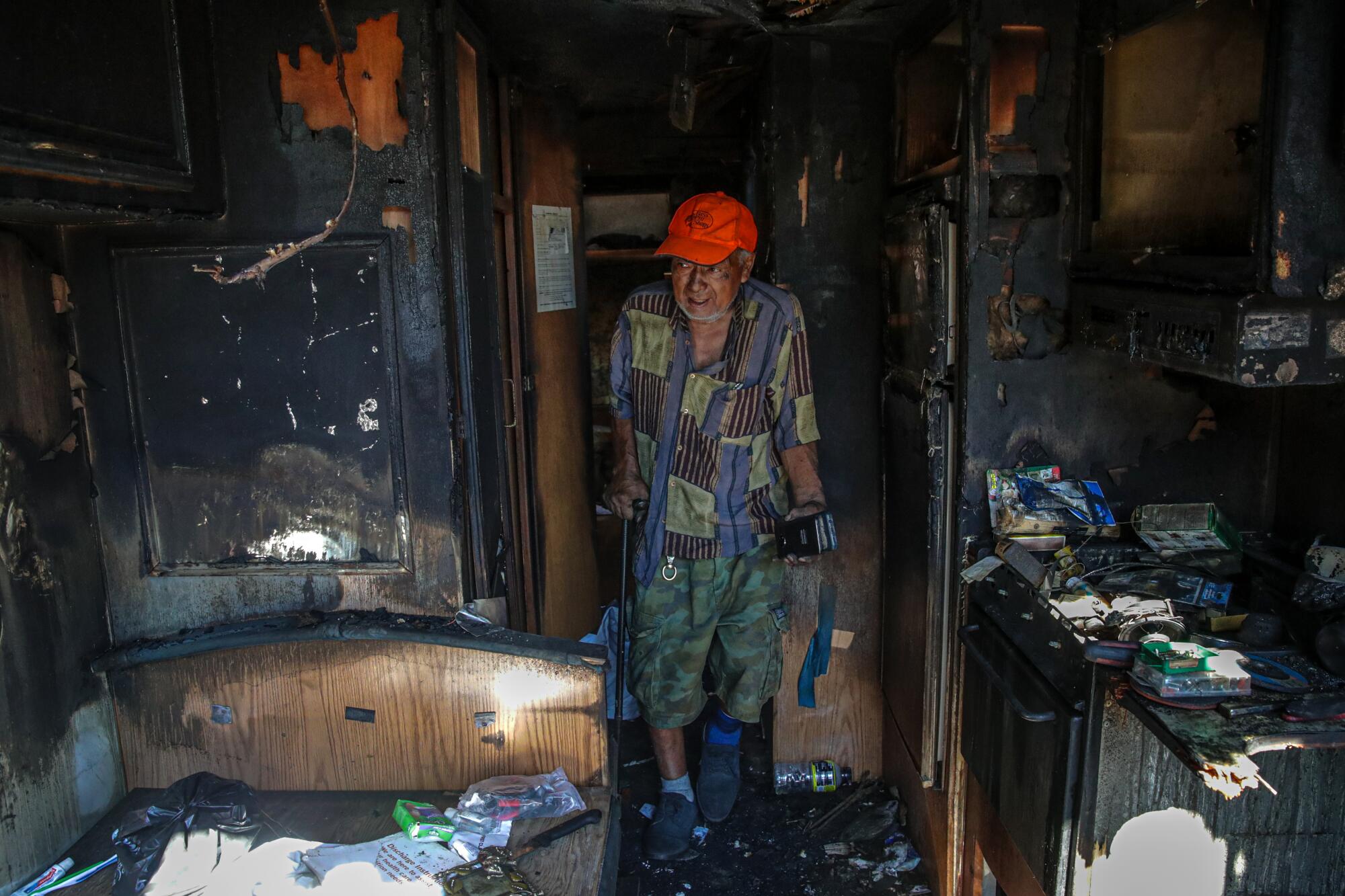
After the fire, Ramon continued living in the charred remains of his RV, its walls lined with soot and ash, shards of glass scattered across the floor.
“Ray, are you here, honey?” Garciaros called from the sidewalk, where the acrid smell still lingered. “How are you? How can you breathe in there?”
Ramon emerged holding a rifle round between black-stained fingers. He found it on the ground, outside his RV, he said. He believed there were men who were trying to kill him.
“Do you need a coffee or anything? A bread or anything?” Garciaros asked.
“No,” he replied as he sifted through his blackened belongings. He was one of the only RV dwellers she had befriended in the area, Garciaros said. His was the third RV that had burned since she arrived. She had recorded one of them on her phone as it went up in flames around the corner from her.
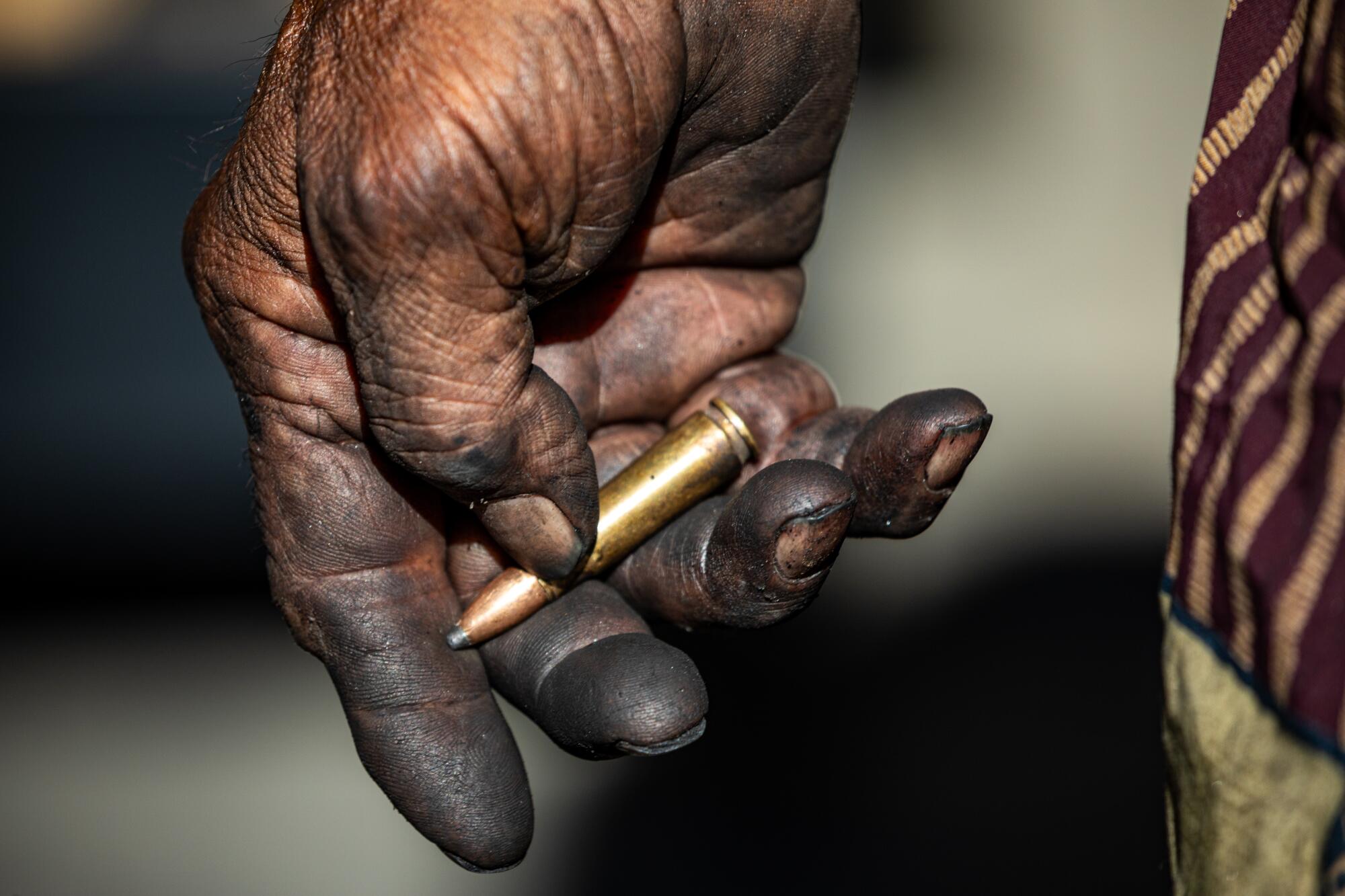
On the way back, she stepped off the sidewalk and into the street to avoid interacting with a group of people who had been up all night using drugs.
Since Ramon’s RV fire, she was too afraid to venture from her camper for more than quick walks to grab coffee, shower at a nearby gym or use the bathroom at the grocery store. Driving the camper was not an option. She knew another RV would swoop in and take her spot.
“It’s time to go,” she said. “I’m done with all this.”
But she still hadn’t found a landlord to rent to her. The voucher expired in less than two months.
By early August, she tracked down a studio apartment less than two miles from her RV. The listing showed vaulted ceilings, a refrigerator and access to a pool. The manager assured her they welcomed Section 8 and even recommended an upstairs unit. She filed the $45 application fee.
“I’m so close,” she said.
As climate change pushes temperatures to increasing extremes, farmworkers in the Coachella Valley are being exposed to dangerous heat at work and at home.
Then she lost her wallet on the bus and her application was delayed as she scrambled to get copies of her ID. In mid-August, she learned that it hadn’t made a difference anyway, the application had been rejected. The property manager told her they wouldn’t accept her voucher after all, she said.
Even after California made it illegal for landlords to discriminate against Section 8 voucher holders, property managers have continued rejecting prospective tenants who hope to use the vouchers. Section 8 still holds a stigma, and some landlords are wary of would-be tenants. Others are hesitant because prolonged bureaucratic delays can extend move-in times. The region’s low vacancy rate has also allowed housing managers to be especially choosy.

Two days after the rejection, as Tropical Storm Hilary flooded her street, she gathered her cats on her lap, trying to avoid the leaks that dripped from her roof. After the storm cleared, with just 13 days left on the voucher, she got word that she had been accepted into a studio in Hyde Park. She had surmounted one of the biggest obstacles housing officials say exists to using the voucher: getting a landlord to agree to rent to you.
The tidy, gray apartment complex sat next to a liquor store along a palm-lined street. It had a small courtyard and succulents dotting the yard.
“This is really happening,” she said.
But while the landlord approved her application, the Los Angeles housing authority would need more information about Garciaros’ bank accounts, marital status, a disposition of joint property with her husband and the financial aid she had received for college classes she was taking in hopes of earning a bachelor’s degree.
For many people living on the street with no computers or bank accounts, the verification process has been near impossible to complete, so much so that Mayor Karen Bass pleaded with the U.S. Department of Housing and Urban Development to waive certain requirements, and in August the agency announced changes to the documentation rules.
But Garciaros wouldn’t reap the benefits. In early September, a housing authority worker reached out to her asking for updated financial documents, and she rushed to file them before the week’s end. After she met that deadline, she got yet another request for more documents.
Then, she lost her phone and with it a way to access emails. Desperate and without money to replace it, she scrambled to get another one from an organization that helps low-income residents. She also persuaded a relative to drive from Laguna Niguel to sign documents showing he intermittently gave her money.
It was now six days after her voucher expired, and Garciaros had started to fear that the landlord wouldn’t hold the apartment. That afternoon, an official called to say that she needed to bring paperwork to the San Fernando Mental Health Center by 2:30 p.m.
Outside her RV, she was crying and despondent. She didn’t know whether she could get there in time.
But a reporter following her case who had showed up to check on her agreed to give her a ride. As she waited for the woman helping her with her case, Garciaros scrolled through her phone trying to pull up the last piece of information she needed: the sum of financial aid received. The phone’s connection was slow, adding to her anxiety.
“My heart is beating so fast right now,” she said.
When Elena Green Adraneda called her into the office, Adraneda was apologetic about the daunting paperwork requirements and said she was worried that Garciaros might lose the apartment.
“I am afraid,” Adraneda said, explaining the long delays, “the property manager Flora will change her mind because it’s taking forever.”
She explained that it was not Garciaros’ fault. Housing applications can drag on for a year, she said.
Garciaros was growing frustrated with the explanations.
“The voucher expires before one year” she objected. “It only gives you 240 days.”
She left the office believing she had finally submitted everything she was required to submit. On the bus ride home, she got a call saying more documentation would be needed.
Many of the 3,000 people and families in L.A. who have received the emergency vouchers remain in limbo.
Weeks later, by the end of September there was still no resolution to her case. She had gone from experiencing a constant roller coaster of emotions to feeling, she said, comfortably numb, like the Pink Floyd song.
“I’m tired,” she said. “Way down deep tired.”

The expiration date on the voucher had passed. But if the landlord who had agreed to rent to her continued holding the apartment, she could still use it. If not, she would have about two weeks to try again before she was out of luck.
As she sat in her RV, waiting for an answer, she kept pushing away the thought that things might not work out. That she might have to start over again. There was a part of her that wasn’t sure she could. But she didn’t let the thought linger.
“I see the people out here that have given up,” she said. “There really is no other choice but to fight. The other is just too hell on earth.”
- Share via
Watch L.A. Times Today at 7 p.m. on Spectrum News 1 on Channel 1 or live stream on the Spectrum News App. Palos Verdes Peninsula and Orange County viewers can watch on Cox Systems on channel 99.
More to Read
Sign up for Essential California
The most important California stories and recommendations in your inbox every morning.
You may occasionally receive promotional content from the Los Angeles Times.
